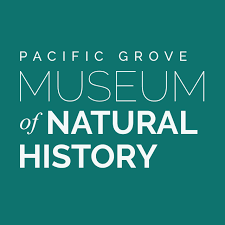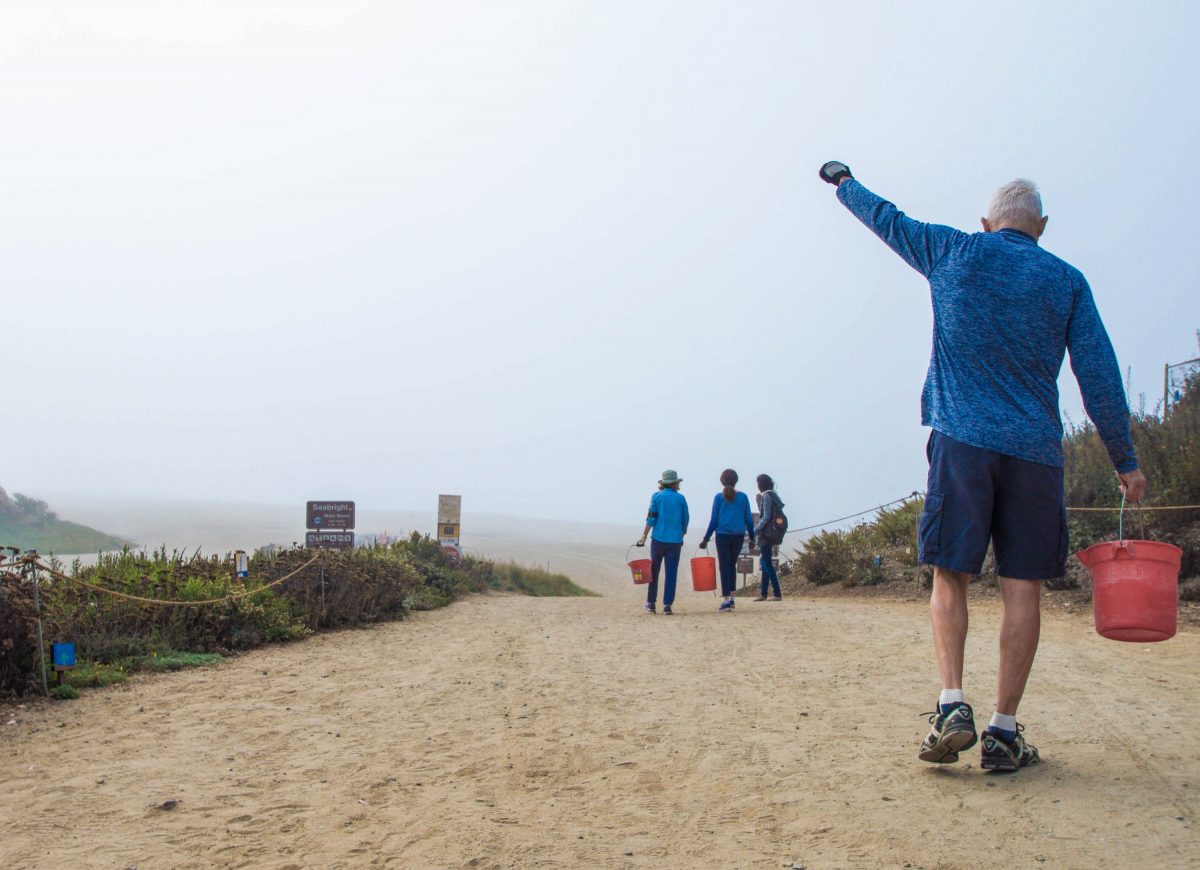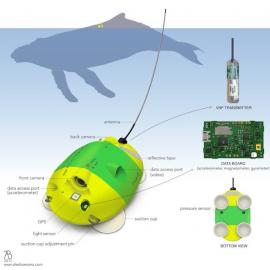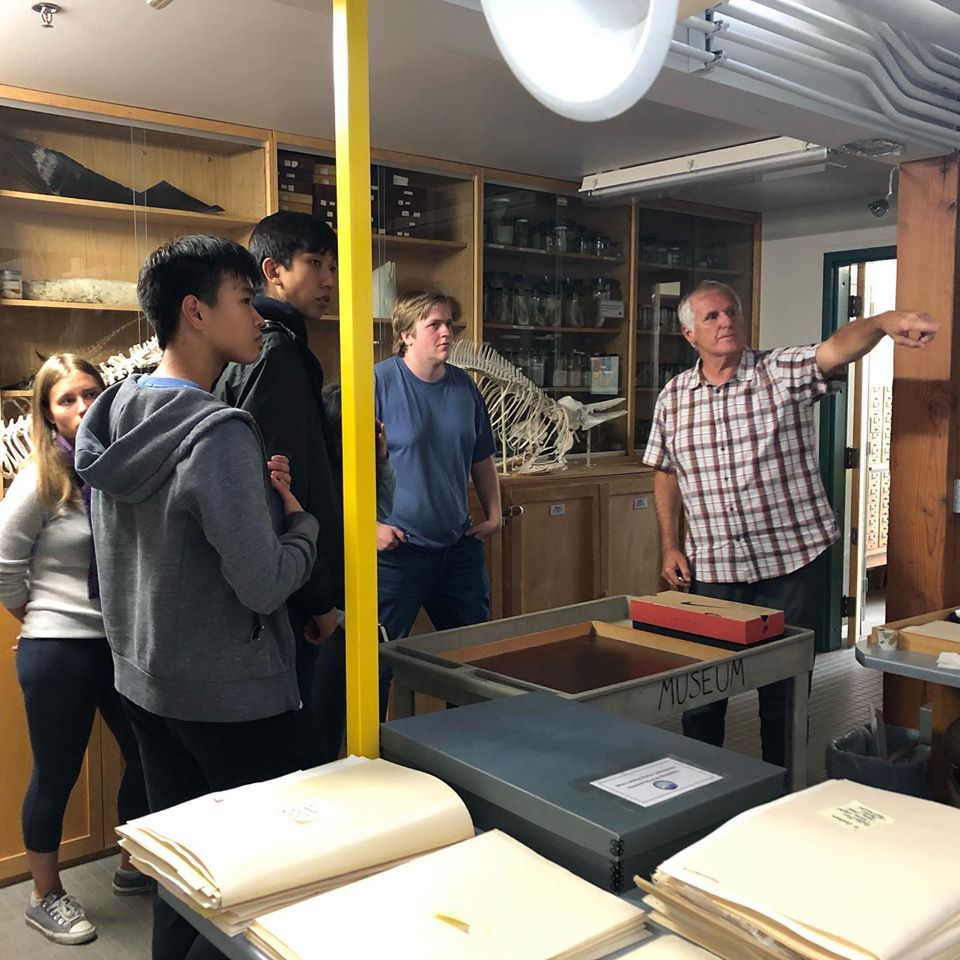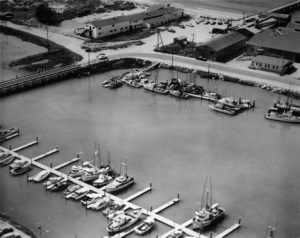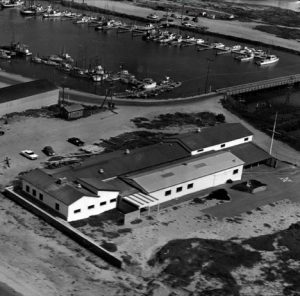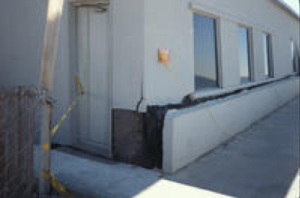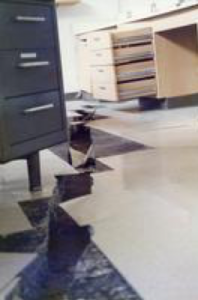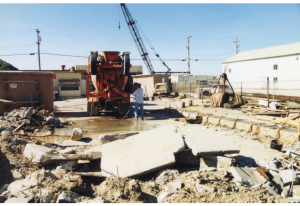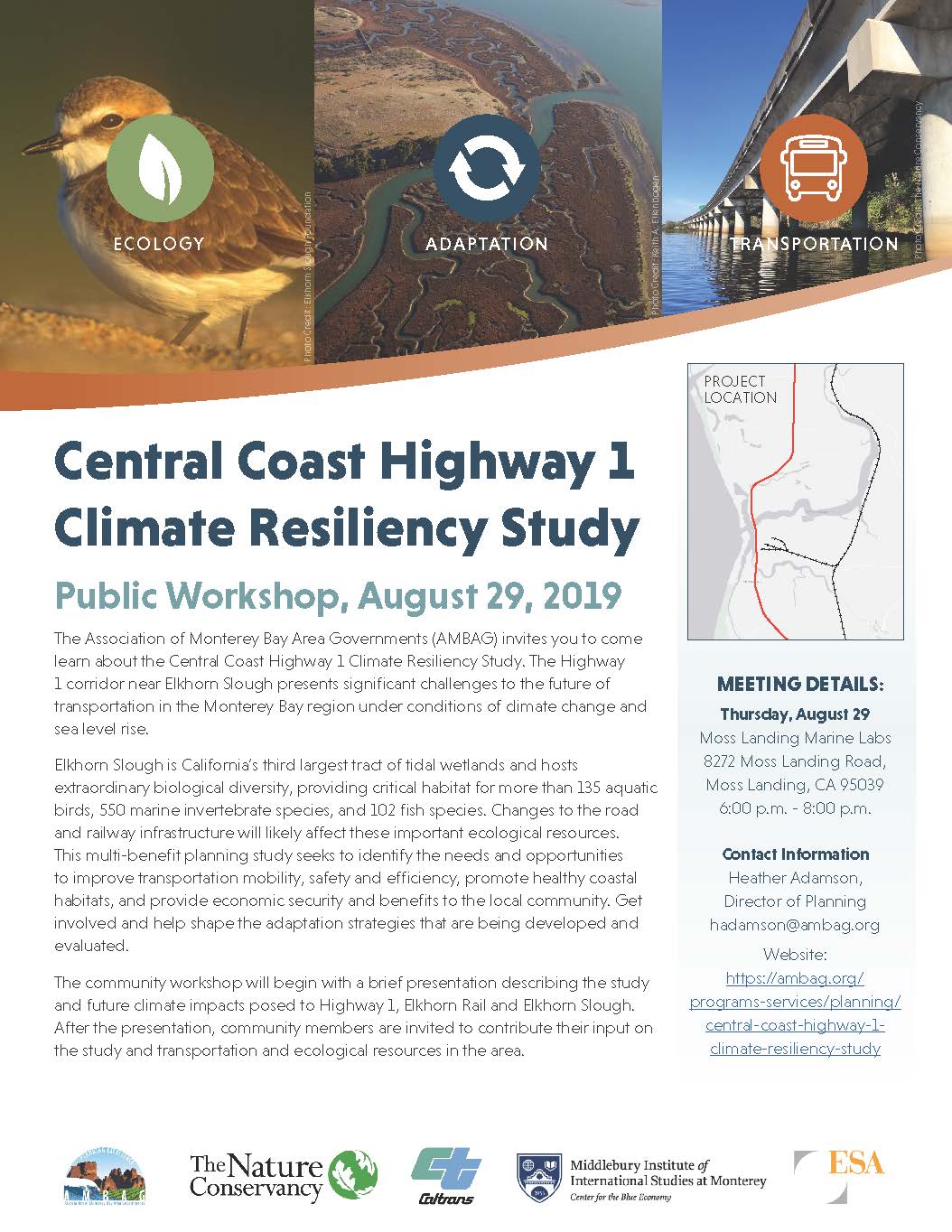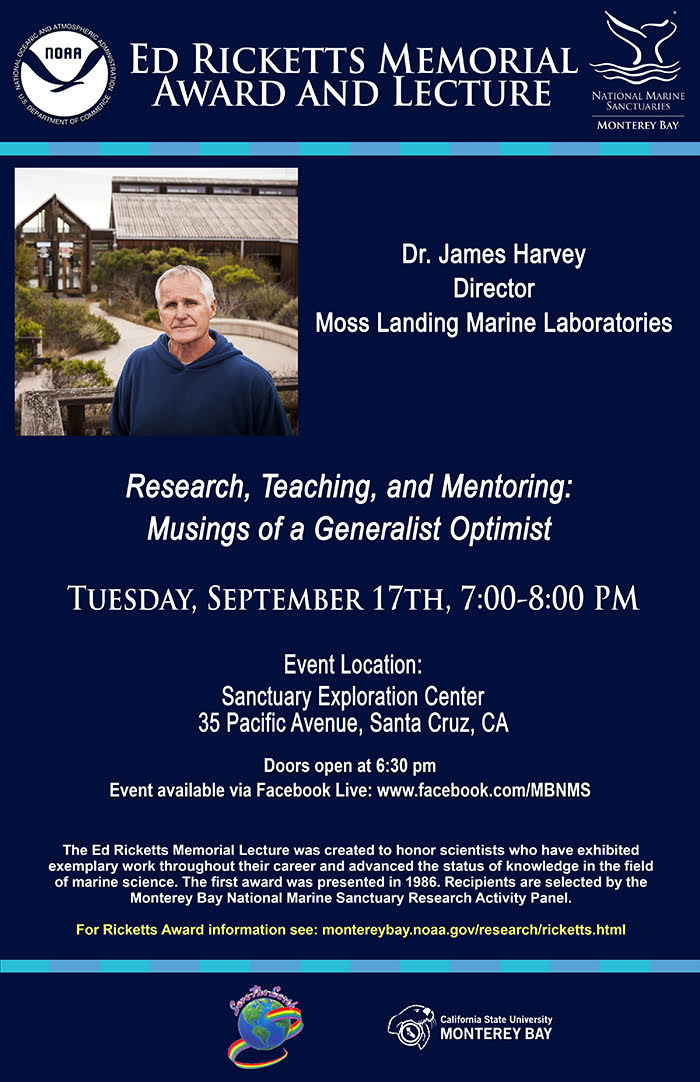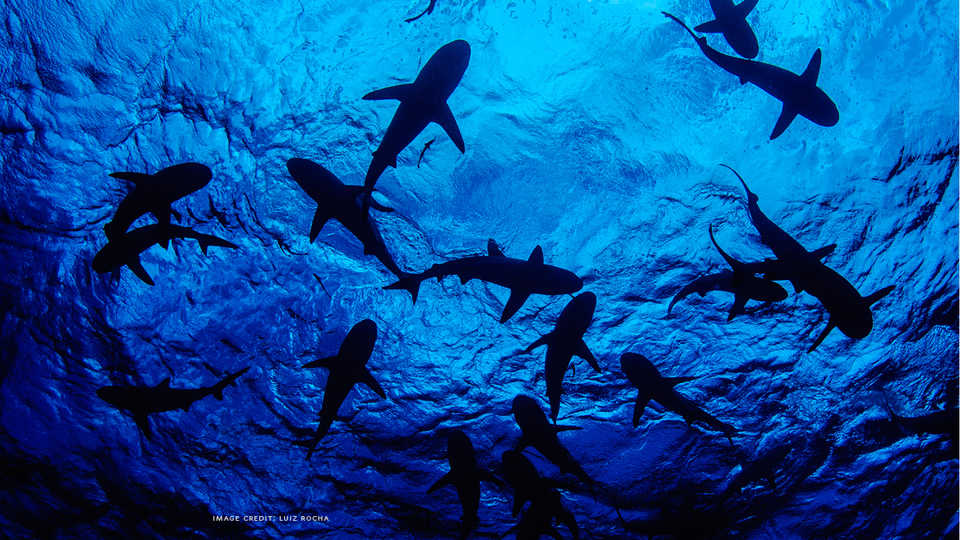Dr. Nybakken then instructed us to leave through the outer classroom door to the courtyard, where we moved to our lunch spot in the middle---to the warm heart of our community---which Dr. Nybakken had also helped to create over years of planning the growth of our marine lab since its founding in 1966 when he became MLML’s first faculty member. Whether we knew it or not, Dr. Jim Nybakken was our hero through thick and thin, protecting his students from the Loma Prieta earthquake and as a pioneer in helping to create the world’s greatest marine lab.
Disturbance and opportunity: The years immediately after the earthquake saw the various labs relocate to disparate locations in Salinas, Castroville, Monterey, and Moss Landing. This physical separation of the labs caused social separation and an erosion of our famous and characteristic social and scientific cohesion and cooperation. Those were grey years in some ways for the marine lab, and for some students. But alas, people like Dr. Nybakken, and many other devoted leaders of our community, worked to establish the amazing “new” lab facilities on the hill overlooking Moss Landing and its spectacular natural setting. This new critical habitat has put emerging generations of graduate students, faculty, and staff in an even better position to understand our changing oceans and help find solutions to the enormous global challenges ahead—thanks in large part to Dr. Jim Nybakken. When I wandered away from Moss Landing, I never did thank him for everything he did for us. Thank you Dr. Jim Nybakken and Bette.
Sheila Baldridge:
Mary’s memories of being in the library just after the earthquake echo mine. I felt the building begin to shake – an earthquake. Then it really shook – an EARTHQUAKE! I got under my desk and hoped for the best. I remember being especially impressed by the gap which opened between the floor and the wall showing the sand beneath. We were very lucky that the shaking did not go on longer or the building would surely have collapsed. I was so grateful when Mary and Danny (Heilprin) appeared and we scrambled out of the window – I wasn’t alone. Thoughts of a tsunami crossed my mind but there wasn’t much we could do about that except head out.
I remember gathering at the Blue House, someone playing a guitar and the rest of us sitting in stunned silence. The strange “dusty” quality to the light as the sun was setting. It was as though we had been transported to another world. I think at that point we were still too shocked to realize what it all meant for the future of the Labs.
The next day reality set in as we gathered at the land side of the bridge and gazed across at our battered home as decisions were being made. Would we be allowed in to salvage the labs. and the library? Or would it be raised to the ground and the research and work of so many be lost forever? But permission was given, and eventually we all trooped in with our hard hats, boxes (where did we find so many boxes?) and rented trucks. The books and journals were packed in boxes, handed out of a window and everything disappeared down the dirt road behind the dunes to Salinas and our new home at San Jose State’s Satellite Campus. The library ended up in two classrooms with the rest stored in an old sugar factory in Spreckles. It was an unreinforced brick building and gave me the creeps every time I had to go there. What if there is another earthquake? Not to mention the resident pigeons and their propensity for pooping on everything. I love birds but … There was one more move across the parking lot to “temporary” buildings where, in spite of all the drawbacks, we thrived and prospered for 10 years.
Apart from the event itself, one of the most moving memories for me was the support we got from students and friends, some long graduated. These never to be forgotten people bringing spouses, children, friends just appeared without being asked, rolled up their sleeves and set to work. They will never know how much this meant to us when we were so overwhelmed by the magnitude of what needed to be done. They boosted our badly bruised morale and gave us hope that a future for the Labs. was possible. The MLML spirit would indeed live on.
Sal Cerchio:
I was sitting in the main classroom that looked out onto the Bay through a wall of windows, what a beautiful venue that was. It was the statistics class that was being taught by a new professor, named Jim Harvey, who had just started that semester at the lab after the departure of my first advisor, Bernd Würsig. My memory is that we were mid-class and Jim was up front lecturing…. and then we felt the first movement. These were the P-waves, the compressional waves of the quake that move fast and radiate out first, shifting you back and forth laterally. At this point everyone seemed to stop, and look around at each other… that moment seemed to linger for a long time, at least for me, and the thought going through my mind was, “Ok, this is an earthquake… is it just a tremor (like so many felt before)? Is it going to stop soon?...” And then the S-waves hit. These are the shear waves that move more slowly and arrive second, and move you up and down vertically, as well as laterally, and are much more violent. At this point, Jim yells “Earthquake, everybody out!!”, or something to that effect, and we all jump up and pour out of the door into the courtyard. The next moments were surreal and seemed to last forever. The group of us stood in the middle of the courtyard, away from the three long buildings that defined the space on the north, west and south sides. Everything that you think is permanent and solid suddenly becomes ephemeral and plastic. The hard ground moved so much that it was difficult to maintain balance and stand, as we all “surfed the ground”. The concrete pad on which the lab sat, and which itself sat on sand undergoing liquefaction, began to crack through, and so did the buildings that sat upon it. Fissures opened from ground to roof in several spots in the walls of the buildings around us, and in turn split the buildings in half, moving apart, and then closing and then opening again. Ruptured water lines sprayed water out of the fissures in the walls into the courtyard. The sea water tank, which towered above the 1-story buildings in the southeast corner of the courtyard, shook back and forth violently, and water came splashing over the top of it in waves, as if some giant took hold of it and shook it violently like a glass of water on a table top. I had to look up the duration of the quake, and found 8-15sec… it seemed a lot longer than that. Some other enduring images:
Realization that the slough was rushing out to the harbor, to the bay, like a running river; the thought that this could mean a tsunami, and the concern that the epicenter may have been out in the bay; recognition that the bridge to the “island” had been taken out in the quake, so no possible exit by car; and Mike Ledbetter, our marine geology professor, exclaiming, “I’m a Geologist, and I’m scared…. I’m a Geologist, and I’m getting out of here!!”
Sandy Zeiner carrying those two leopard sharks, one in each hand, from the holding tank to the slough, and those sharks wriggling and twisting to get a bite out of her in the process; and later, the dead torpedo ray in the bottom of the drained tank that was not so lucky.
Sleeping in the blue house that night, since I had no way to get home to Santa Cruz, along with several other MLML refugees; and through the night waking in a panic with aftershocks, that sent a terror through me and made me jump up and run for the door.
The days that followed, the unity and bond that formed among all the MLMLers, students and profs and researchers, returning to the lab to help with the salvage operation, forming lines to pass equipment and data and specimens out of the labs. And waiting for evaluators to come to inspect the lab and eventually red tag it, so that no one could go in again, I think it took a few days before they came.
A deep sadness about the loss of that landmark.
These experiences became such a part of me, and remain still, even if I do not talk of them very often. I think decades ago, I used to tell the stories more often, but now in 2019, I cannot recall the last time I described these events. And yet it still seems so near to me, so recent, and real … and oddly mythical at the same time. I believe these are the characteristics of trauma. And I suspect that we all went through some level of what is now so commonly known as PTSD, but was less well-known or recognized then. Here is to my MLML brothers and sisters who all shared that experience on that day, and who came together in the aftermath to support each other and the lab, I’ll raise a glass to us all tonight!!
